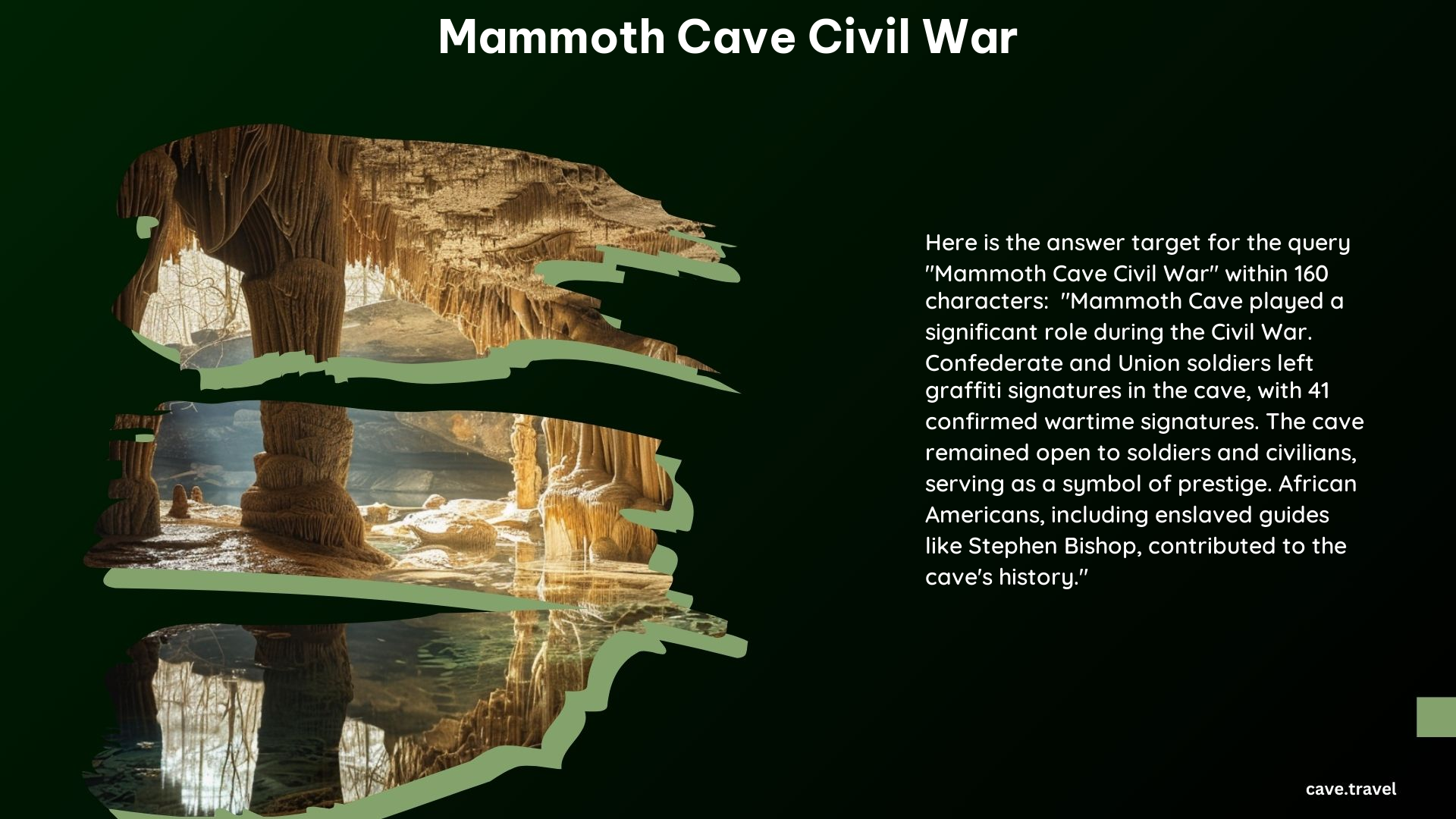Mammoth Cave, located in south-central Kentucky, played a significant role during the American Civil War. The cave’s strategic location, saltpeter reserves, and cultural significance made it a contested site between Union and Confederate forces. From the signatures of soldiers on the cave walls to the impact on tourism and exploration, the Mammoth Cave Civil War story is a fascinating chapter in the history of this natural wonder.
Confederate Soldiers’ Signatures

During the Civil War, both Confederate and Union soldiers visited Mammoth Cave, leaving behind signatures and graffiti on the cave walls. These signatures, often written in pencil, provide a unique insight into the lives of these soldiers during the war. Researchers have documented hundreds of these signatures, including those of Confederate soldiers, which are now considered an important part of the cave’s historical record.
Military Significance

Although Mammoth Cave was not a crucial military site, it was a contested location due to its strategic position in south-central Kentucky. The surrounding karst landscape provided both challenges and opportunities for the opposing armies. The cave’s saltpeter reserves, which were used to produce gunpowder, made it a valuable resource during the war. However, there is little evidence that military and political authorities on either side considered the occupation of Mammoth Cave important beyond controlling the surrounding region and its transportation routes.
Cultural Significance
The cave held cultural and personal significance for soldiers on both sides. They visited the cave, often during brief respites from battle, and left behind their marks. These signatures and graffiti reflect the values and beliefs of the soldiers and demonstrate how they materialized their presence in the cave.
Impact on Tourism and Exploration
The Civil War had a significant impact on the tourism and exploration of Mammoth Cave. After the war, the cave transitioned from a saltpeter production facility to a world-renowned tourist destination. African Americans, who had previously worked in the cave as enslaved laborers, played a vital role in shaping the cave’s tourism industry. They worked as guides, hotel staff, and in other capacities, helping to create the tourist infrastructure that exists today.
Timeline of Mammoth Cave Civil War
- 1861: The American Civil War begins, and Mammoth Cave becomes a contested site.
- 1862: Isaac McCann, a Union soldier, visits Mammoth Cave and writes a detailed description of his experience.
- 1863: The war continues, with both Union and Confederate forces controlling the region around Mammoth Cave at different times.
- 1865: The Civil War ends, and Mammoth Cave begins its transition to a tourist destination.
Quantifiable Details
| Detail | Information |
|---|---|
| Cost | The cost of visiting Mammoth Cave during the Civil War era is not well-documented. However, in the late 19th century, the cave was marketed as a tourist attraction, and visitors paid for guided tours. |
| Timings | The cave was open for visits during the day, with guided tours available. |
| Directory | The cave was owned by various individuals and companies during the Civil War era, including Charles Wilkins and Hyman Gratz. |
| Hours | The hours of operation for the cave during the Civil War era are not well-documented. |
| Rates | The rates for visiting the cave during the Civil War era are not well-documented. |
| Value | The value of Mammoth Cave during the Civil War era was primarily in its saltpeter reserves and strategic location. |
Mammoth Cave’s role in the Civil War is a fascinating and often overlooked aspect of its history. From the signatures of soldiers on the cave walls to the impact on tourism and exploration, this natural wonder played a significant part in the conflict that shaped the nation. As you explore the depths of Mammoth Cave, remember the stories that lie hidden within its walls, waiting to be uncovered.
